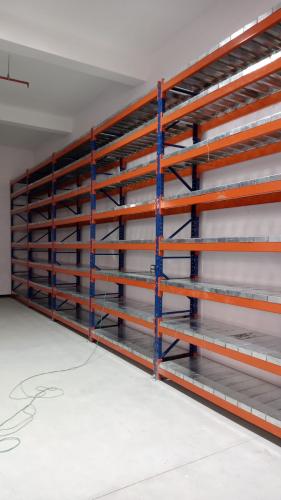The Handbook To Design The Best Pallet Racks

A Comprehensive Guide To Design The Best Pallet Racks
In the world of logistics and
warehousing, the efficiency of storage solutions can make or break operations.
Pallet racks, in particular, stand as one of the fundamental elements in
optimizing storage space and enhancing workflow within warehouses. Designing
the best pallet racks requires a meticulous approach that balances
functionality, safety, and cost-effectiveness. This comprehensive guide aims to
provide insights into the key considerations and steps involved in crafting
optimal pallet rack systems, with a focus on choosing reputable Pallet Racks
Manufacturers.
Understanding Pallet Racks
Before delving into the design process,
it's essential to grasp the basic concept of pallet racks. Pallet racks are
industrial storage systems designed to store palletized materials in horizontal
rows with multiple levels. These racks facilitate efficient use of vertical
space, allowing warehouses to maximize storage capacity while maintaining
accessibility to goods. Pallet racks come in various configurations, such as
selective racks, drive-in racks, push-back racks, and more, each suited for
different storage requirements and warehouse layouts.
Key Considerations for Designing Pallet Racks
·
Warehouse Layout and Space Utilization: Start by assessing the warehouse layout and available space.
Consider factors such as aisle width, ceiling height, and floor space to
determine the optimal configuration for pallet racks. Selective racks are ideal
for high selectivity and quick access to individual pallets, whereas drive-in racks
or push-back racks may be more suitable for dense storage of homogeneous
products.
·
Storage Requirements and Load Capacity: Understand the types of products to be stored and their weight and
dimensions. This information is crucial for determining the appropriate rack
configuration, beam spacing, and load capacity. Ensure that the pallet rack
system can safely support the intended loads to prevent accidents and product
damage.
·
Safety Regulations and Compliance:
Compliance with safety regulations, such as those set by OSHA (Occupational
Safety and Health Administration) and ANSI (American National Standards
Institute), is paramount in pallet rack design. Adhere to guidelines regarding
rack installation, anchoring, beam connections, and load capacities to ensure a
safe working environment for warehouse personnel.
·
Future Expansion and Flexibility:
Anticipate future growth and changes in inventory requirements when designing
pallet racks. Opt for modular Pallet
Rack in Delhi that offer flexibility for reconfiguration or expansion
as needed. This scalability allows warehouses to adapt to evolving storage
needs without significant disruptions to operations.
·
Durability and Quality: Invest in
high-quality pallet racks constructed from durable materials, such as steel, to
ensure long-term reliability and performance. Consider factors like corrosion
resistance, powder-coated finishes, and structural integrity when selecting
pallet rack components.
Choosing the Right Pallet Rack Manufacturer
Selecting a reputable pallet rack
manufacturer is crucial in ensuring the quality, reliability, and safety of the
storage system. Here are some factors to consider when evaluating pallet rack
manufacturers:
·
Industry Experience and Reputation: Look for
manufacturers with extensive experience in designing and producing pallet racks
for various industries. Check customer reviews, testimonials, and case studies
to gauge the manufacturer's reputation for quality and service.
·
Product Range and Customization Options: Choose a manufacturer that offers a diverse range of pallet rack
products to suit different storage requirements and applications. Additionally,
inquire about customization options to tailor the rack system to specific
warehouse needs.
·
Compliance and Certification: Verify
that the Shelving Racks
Manufacturers products comply with relevant industry standards and
regulations, such as guidelines and seismic codes. Certification from reputable
organizations demonstrates the manufacturer's commitment to quality and safety.
·
Support and Service: Evaluate the
manufacturer's level of customer support, including assistance with rack
design, installation guidance, and ongoing maintenance services. Opt for a
manufacturer that prioritizes customer satisfaction and provides responsive
support throughout the lifecycle of the pallet rack system.
·
Cost and Value: While cost is an
important factor, prioritize value over price alone. Consider the total cost of
ownership, including factors like durability, reliability, and long-term
performance, when comparing quotes from different manufacturers.
Post Your Ad Here
Comments